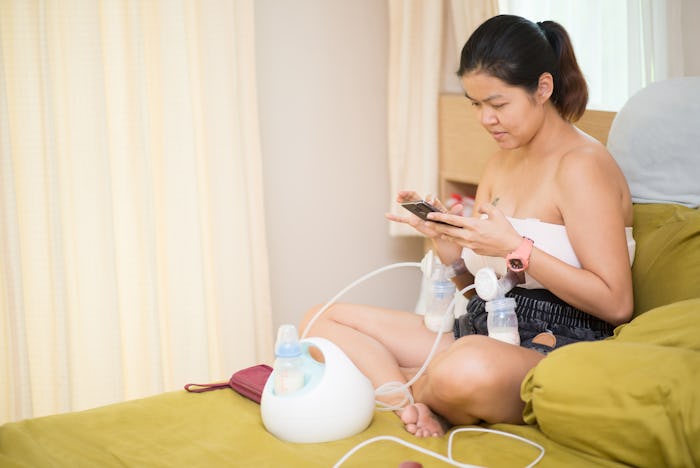Life

This Tiny Piece Of Your Breast Pump May Be The Reason You're Getting Less Milk
Your breast pump is a pretty fascinating device. I mean, have you ever wondered how a machine that can fit in a purse-sized bag is able to stimulate let-down, remove milk from your breasts, and even increase your supply if you need to? Breast pumps are incredible tools for many moms, but knowing a little bit more about the tiny part of your breast pump that makes the whole thing work can ensure that your pump fits you as well as it should and help you express the maximum amount of milk possible.
Although there are many parts that make up your electric breast pump, when it comes to your comfort and the pump's effectiveness, it all boils down to a single part on the outside of the pump. If you've ever tried to pump with poor fitting flanges, you know what I'm talking about.
According to Ameda, the breast pump flanges — or breast shields — are the parts of your pump that actually fit over your breasts. They're shaped like a funnel and help to draw the milk out of your breast and into the bottle you're pumping. But if you don't have a flange that fits properly, the entire endeavor is useless. Since every woman's breasts and nipples look a bit different, finding the correct flange size for you might not be as easy as you expected.
According to Aeroflow Inc. the flanges are meant to fit snuggly over your nipple, creating a suction gently around your areola. If the flange is too big for you, the suction won't form and your nipple won't be drawn into the flange since there will be a lot of extra space. If it's too small, it will likely be painful as your nipple rubs the sides of the flange.
If your pumping sessions have been painful or ineffective, the first thing you should check is your breast pump flange size. According to Medela, most pump brands make flanges ranging from about 21 mm to 36 mm, so every woman should be able to find a flange that fits her properly. To find the correct size, Medela instructed mothers to measure their areola diameter and find the correct flange size for that diameter. Ideally, the nipple will be centered in the shield and able to move freely during pumping.
When issues arise as you pump, checking the speed, tubing, or even worrying about your milk supply might be the first things to pop into your mind. However, the issue probably boils down to simply poor fitting flanges. Try going up or down a size and watch as your breast pump becomes as effective as you need it to be.